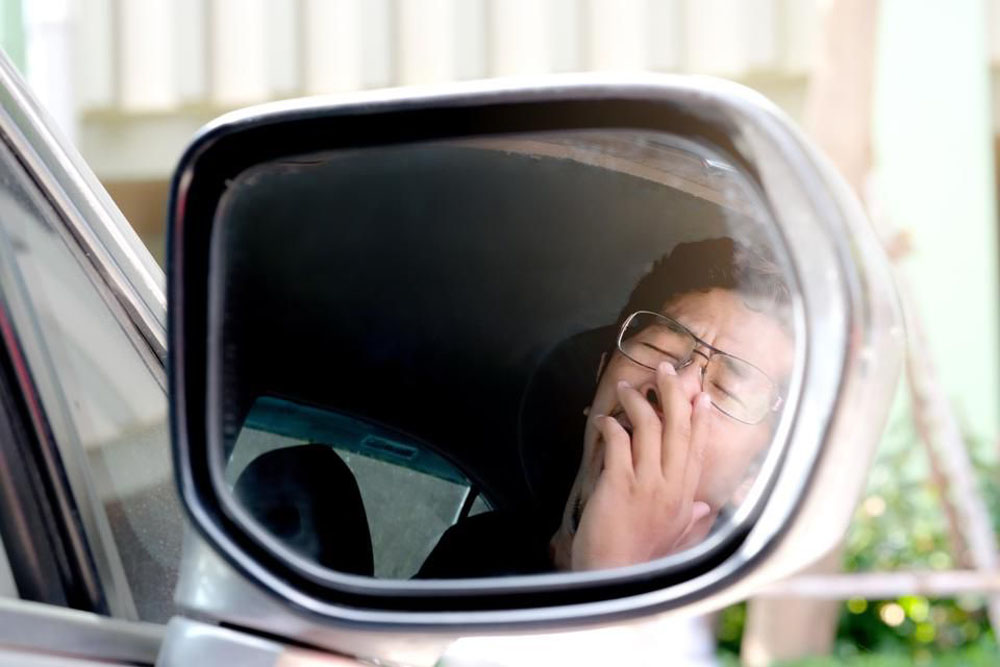It turns out that I have something in common with Anson Williams, who played Potsie Weber on the long-running 1970s television show “Happy Days.” No, not that we were both nerds in high school, he fictional and I actual.
Both Williams and I have fallen asleep while driving and narrowly averted a major crash. Nov. 5-12, 2017, is Drowsy Driving Prevention Week, in which this little discussed but very dangerous phenomenon gets publicized. Just what happened to Williams and me, how common is it, and what can be done to prevent it?
In Williams’ case, it occurred in 1988. He was directing an episode of the sitcom “Slap Maxwell” outside Los Angeles on a very hot day. Driving home after a long day of work, Williams dozed off. He abruptly woke up, “bouncing off the road in the desert.”
Fortunately, Williams did not hit a large cactus or anything that might have totaled his car.
“It scared the heck out of me,” he recently recalled. “I was probably both tired and dehydrated.”
In my case, I was driving home from a conference in the middle of the day. Ironically, I had taken a nap that morning. Indeed, that may be why I dismissed some fatigue that I felt and decided to keep driving.
The next thing I knew, I was jarred awake as the right side of my car scraped against a guard rail. That highway safety measure, which most of us take for granted, may have saved my life.
Interestingly, I was probably more aware of the issue of drowsy driving than most people. I had written a book on the history of drunken driving and knew that sleep deprivation makes it more likely that drivers who are drinking will crash.
I also knew that Williams and I were in good company. In August 1946, Eleanor Roosevelt, driving on the Saw Mill Parkway from Hyde Park to New York City, fell asleep at the wheel and caused a three-car crash. Including her, five people were injured. Roosevelt later candidly documented this event in her newspaper column, “My Day,” blaming the sun and the fact that she had no one sitting beside her to keep her alert.
The three of us are the tip of the iceberg. The National Highway Traffic Safety Administration estimates that as many as 6,000 deaths annually may be caused by drowsy drivers, although some of these drivers may also be impaired for other reasons as well. Studies show that 1 in 25 drivers report having fallen asleep while driving during the previous 30 days.
So what can be done to prevent drowsy driving? Williams asked this question shortly after his incident, calling the physician and inventor Henry Heimlich, who was his cousin. Heimlich’s famous maneuver, which he devised in 1974, has saved countless lives of people choking on food.
Heimlich pointed out to Williams that there were specific foods—such as citrus fruits and hot peppers—which, when placed on the tongue, can immediately stimulate someone and make them more alert. According to the Society for Neuroscience, this occurs by the release of adrenaline, one of the body’s “fight or flight” reflexes.
Working with a business partner, Joanna Connell, and a group of scientists, Mr. Williams invented Alert Drops, a citric acid mixture that drowsy drivers can place on their tongues. The resultant stimulation, which Mr. Williams estimates lasts for 30-60 minutes, can get the driver to a rest stop or exit.
Which is the point. Even though it is possible to make drowsy drivers less tired, other things are going on in their lives that are causing fatigue, such as inadequate sleep, excessive work, medications they may be taking or a medical condition such as narcolepsy. The ultimate goal must be to identify the cause of the drowsiness and address it.
If, as in my case, the fatigue was an isolated incident, taking a nap at a rest stop, drinking coffee or taking caffeine pills can temporarily fix the problem. But ongoing fatigue behind the wheel is a major public health hazard. While all drivers should consider carrying Alert Drops, they are not meant to mask a larger problem.
Substantial barriers remain to addressing the issue of drowsy driving. Although those who drive under the influence of alcohol or drugs are arguably more “culpable” than tired drivers, there is still a stigma attached to falling asleep at the wheel that makes it shameful to discuss. Mr. Williams terms it a “quiet demon.”
That is why I decided to “out” myself in this article.
Originally published on Forbes.com on November 9th, 2017.
